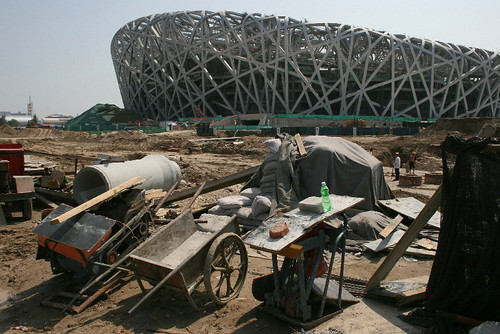I recently read an article at contagious (hat tip to Sebastian Garn for sharing) about Amsterdam Worldwide claiming to create better global campaigns because they are using a scientific method of analyzing cultures – which they call Cultural Mapping. That tool they cite is Hofstede’s cultural dimensions, which basically says people – or cultures – are different in the dimensions Power Distance; Individualism; Masculinity and Uncertainty Avoidance.
While I certainly agree that being culturally relevant is important, if not the most important aspect of brand management and communication, I do find a bunch of things interesting in that story.
First of all, it’s not like Amsterdam Worldwide has uncovered an academic secret. This is one of the most cited theories ever. According to Google Scholar he’s been cited 8810 times and from what I’ve been told at the university, even ahead of guys such as Jesus or Karl Marx. I think I heard it alone 5 to 10 times in my bachelor. Of course, it’s not like they are saying they use this model exclusively, but I still find it strange that an agency runs an article about something everybody who ever did an intercultural training has heard of before.
Then of course, using this model – just as any other model – doesn’t guarantee anything. It’s a model to not forget cultural dimensions but I think it’s not that good of an idea to base roundhouse-kick-like generalizations upon it or to expect ground-breaking “insights” from using it. I just think that focusing on a smaller group of people and finding out something interesting about them is more important than matching communication with a top-level insight about what is modeled as mainstream culture. (I always try to keep in mind that there might be bigger differences between Austrian IT-ers and “blue collar” workers than between IT-ers from Austria and Slovakia. And let’s not forget gender issues, age and other stuff.)
Last but not least, the research Hofstede has build his theory upon has been heavily criticized. It’s pretty old and it was done only with IBM employees at the beginning – IT people not exactly being the most representative sample group. Also, for example for Austria it concluded that we have among the lowest power distance score worldwide, meaning
“[…] people expect and accept power relations that are more consultative or democratic. People relate to one another more as equals regardless of formal positions. Subordinates are more comfortable with and demand the right to contribute to and critique the decisions of those in power”.
Power Distance
Now the intersting thing is that this is totally against what Austrian common sense would tell you and what researchers at my university found out, and it can only be interpreted and understood if you spend some time thinking about Austrian history and culture. What this dimension doesn’t tell you is that “Austrians” do like to complain about their bosses, don’t respect them too much and do think that their politicians, doctors, intellectuals and whoever else aren’t any smarter or deserving than “we” are. This, however, is only true if said people aren’t in the room. Once they are present the generalized “we” very much focuses on academic titles and job titles, hierarchies and power. So “Austrias” have a pretty much schizophrenic relationship with authority which my prof reasoned is because of some 1000 years of monarchy and bureaucratic state. “Cultural Mapping” won’t tell you this. And neither will it tell you how second-generation immigrants have appropriated this into their lives.
I like theories and models, I just think one has to be careful using them.

